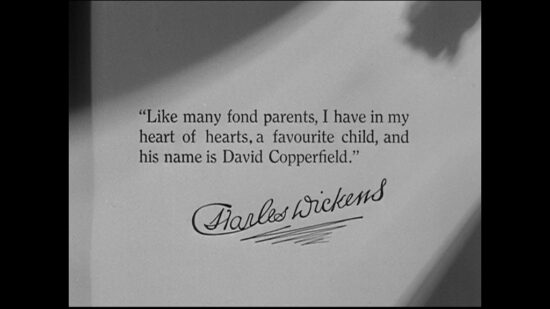Plot and Storyline
David Copperfield by Charles Dickens is a classic coming-of-age novel that follows the life and adventures of its titular character. The story begins with David’s birth in the English countryside and takes us through his journey into adulthood, showcasing the challenges and triumphs he faces along the way.
As a young boy, David is raised by his mother and their loyal housekeeper, Clara Peggotty, after the death of his father. However, his mother remarries a man named Edward Murdstone, who proves to be cruel and abusive. David is sent away to a boarding school, Salem House, where he endures mistreatment from his headmaster, Mr. Creakle, and forms a close friendship with a fellow student, James Steerforth.
After his mother’s untimely death, David is sent to work in a factory in London, where he experiences the harsh realities of poverty and labor. Determined to improve his circumstances, he runs away from the factory and seeks refuge with his eccentric aunt, Betsey Trotwood. Under her care, David receives an education and begins to pursue his dream of becoming a writer.
Throughout the novel, David encounters a colorful cast of characters who shape his journey. These include the kind-hearted Mr. Micawber, the ever-optimistic Wilkins Micawber, and the enigmatic Uriah Heep. He also falls in love multiple times, but it is his enduring affection for Agnes Wickfield, the daughter of his mentor, that becomes a central focus of the story.
The plot takes various twists and turns, exploring themes of love, loss, betrayal, and redemption. David’s path to self-discovery and personal growth is marked by both triumphs and setbacks, and his resilience in the face of adversity is a testament to the indomitable human spirit.
Characters
David Copperfield presents a rich tapestry of characters that leave a lasting impression on the reader. At the heart of the story is David himself, whose development from an innocent child to a mature adult forms the narrative backbone. His experiences and interactions with others shape his character and provide insights into the human condition.
Other notable characters include Peggotty, David’s devoted housekeeper who becomes a mother figure to him, and Clara Copperfield, his gentle and loving mother. Edward Murdstone, David’s stepfather, represents the oppressive forces that seek to stifle his individuality and freedom.
Agnes Wickfield, David’s close friend and confidante, embodies purity and wisdom. Her unwavering support and understanding serve as a guiding light for David throughout the story. Steerforth, on the other hand, represents the allure of charisma and the dangers of misplaced trust.
Uriah Heep, a conniving and manipulative character, serves as a symbol of hypocrisy and deceit. His actions provide a contrast to the authenticity and integrity of characters like Mr. Micawber, who despite his financial troubles, remains steadfast in his principles.
Each character in the novel plays a distinct role in the story, contributing to its themes and conflicts. Their relationships and motivations shape David’s journey, allowing readers to empathize with his struggles and victories.
Themes and Symbols
David Copperfield explores several major themes that resonate with readers across generations. One prominent theme is the journey of self-discovery and personal growth. Through David’s experiences, we witness the transformative power of adversity and the resilience of the human spirit. His ability to overcome obstacles and learn from his mistakes highlights the importance of perseverance and introspection.
Another significant theme is the impact of social class and wealth on individuals’ lives. The stark contrast between characters from different social backgrounds, such as the impoverished Micawber family and the affluent Wickfields, sheds light on the inequalities and prejudices prevalent in Victorian society.
Love and relationships are explored extensively in the novel. David’s various romantic pursuits, including his infatuation with the vivacious Dora Spenlow and his deep connection with Agnes, highlight the complexities of human emotions and the challenges of finding true companionship.
Symbols play a crucial role in conveying deeper meanings in David Copperfield. For example, the image of the sea represents the vastness of life’s possibilities and the unpredictability of fate. David’s frequent encounters with water, whether as a child witnessing his mother’s drowned body or as a young man navigating stormy waters, symbolize his journey towards self-discovery and emotional maturity.
Writing Style
Charles Dickens is renowned for his vivid and evocative writing style, and David Copperfield is a testament to his literary prowess. His use of rich imagery and descriptive language brings the story and its characters to life, immersing the reader in the world of 19th-century England.
Dickens employs various literary techniques to enhance the narrative. His skillful characterization allows readers to form deep connections with the characters, as they are portrayed with depth and complexity. The use of foreshadowing and dramatic irony creates suspense and tension, keeping the reader engaged throughout the novel.
The narrative structure of David Copperfield is primarily linear, with occasional flashbacks and reflections that add depth to the story. Dickens employs a first-person narrative, with David himself serving as the narrator, which provides an intimate and personal perspective on the events unfolding.
One of the notable qualities of Dickens’s writing style is his ability to capture a wide range of emotions, from joy and humor to sorrow and despair. His keen observations of human nature and society are reflected in his witty dialogues and social commentary. Dickens also infuses the narrative with elements of satire, highlighting the absurdities and injustices of the Victorian era.
A notable passage that exemplifies Dickens’s writing style is the opening lines of the novel: “Whether I shall turn out to be the hero of my own life, or whether that station will be held by anybody else, these pages must show.” This sentence sets the tone for the introspective and reflective nature of the story, inviting the reader to embark on a journey of self-discovery alongside the protagonist.
Setting and Atmosphere
The setting of David Copperfield encompasses both rural and urban landscapes of 19th-century England. From the idyllic countryside of Blunderstone Rookery, where David spends his early years, to the bustling streets of London, each location contributes to the overall atmosphere of the novel.
The contrast between the tranquil beauty of the countryside and the harsh realities of city life reflects the dichotomy between innocence and experience that David encounters throughout his journey. The vivid descriptions of London, with its crowded streets and poverty-stricken neighborhoods, create a vivid backdrop for the struggles faced by the characters.
The atmosphere of the novel shifts along with David’s experiences. In his early years, there is a sense of nostalgia and innocence, as he recalls his idyllic childhood. As he faces hardships and challenges, the atmosphere becomes more somber and reflective, capturing the complexities of life.
Historical, Social, or Political Context
David Copperfield was written and set during the Victorian era, a time of significant social and economic change in England. Dickens’s novel reflects the social issues and inequalities prevalent during this period.
The novel provides a critique of the rigid class structure and the social injustices faced by the lower classes. Dickens highlights the harsh realities of child labor, poverty, and the mistreatment of orphans, shedding light on the need for social reform.
David’s experiences in the education system, particularly his time at Salem House, reflect the shortcomings and abuses of the Victorian educational system. Dickens’s portrayal of the oppressive boarding school serves as a commentary on the dehumanizing effects of such institutions.
The role of women in Victorian society is also explored in the novel. Characters like Agnes and Dora challenge traditional gender roles, embodying strength, intelligence, and independence. Through their stories, Dickens critiques the limited opportunities available to women at the time.
Impact and Reception
David Copperfield is widely regarded as one of Charles Dickens’s greatest works and has had a profound impact on literature. Its rich characterizations, engaging plot, and exploration of social issues have captivated readers for generations.
The novel received critical acclaim upon its publication in 1850 and has since become a staple of English literature. Its success solidified Dickens’s reputation as one of the foremost Victorian novelists.
David Copperfield has also influenced subsequent works of literature. Its themes of personal growth, social justice, and the power of resilience continue to resonate with readers today. The character of David Copperfield himself has become an iconic figure in literature, representing the universal journey of self-discovery.
In conclusion, David Copperfield is a timeless masterpiece that delves into the complexities of human nature, societal injustices, and the pursuit of self-identity. Dickens’s masterful storytelling, rich characters, and exploration of universal themes have ensured its lasting impact on literature. Through its enduring relevance, David Copperfield continues to captivate readers and inspire introspection.
What influence did DAVID COPPERFIELD BY CHARLES DICKENS have?
“David Copperfield” by Charles Dickens has had a significant influence on literature and popular culture since its publication in 1850. Here are some of the key influences of the novel:
- Development of the Bildungsroman Genre: “David Copperfield” is considered one of the finest examples of a Bildungsroman, a novel that follows the protagonist’s journey from childhood to adulthood, focusing on their moral, psychological, and intellectual growth. Dickens’ portrayal of David Copperfield’s life experiences, struggles, and personal development set a standard for future coming-of-age narratives.
- Realism and Social Critique: Dickens was known for his realistic portrayals of Victorian society and its social issues. “David Copperfield” reflects this by depicting the harsh realities of poverty, child labor, social inequality, and the struggles of the working class. The novel’s social critique helped raise awareness of these issues and influenced subsequent authors in their exploration of social problems.
- Complex Characters: “David Copperfield” features a rich cast of memorable and complex characters. From the lovable and flawed protagonist David Copperfield, to the iconic villains such as Uriah Heep and the abusive Mr. Murdstone, Dickens created characters with depth and psychological complexity. This approach to character development influenced later authors in their quest to create vivid and multifaceted characters.
- Autobiographical Elements: Dickens drew heavily from his own life experiences in creating the character of David Copperfield. The novel reflects Dickens’ own journey from a difficult childhood to becoming a successful writer. The intertwining of personal experiences and fictional storytelling added a sense of authenticity and emotional depth to the narrative.
- Popular Culture References: “David Copperfield” has left its mark on popular culture through various adaptations and references. The novel has been adapted numerous times for stage, film, and television, further popularizing the story and its characters. Phrases such as “Great Expectations” and “Barkis is willing” from the novel have entered the English lexicon.
Overall, “David Copperfield” has had a lasting influence on literature, shaping the development of the Bildungsroman genre, offering social critique, presenting complex characters, drawing from autobiographical elements, and leaving a mark on popular culture.
Sources
David Copperfield | Summary, Analysis, Adaptations, & Facts | Britannica






